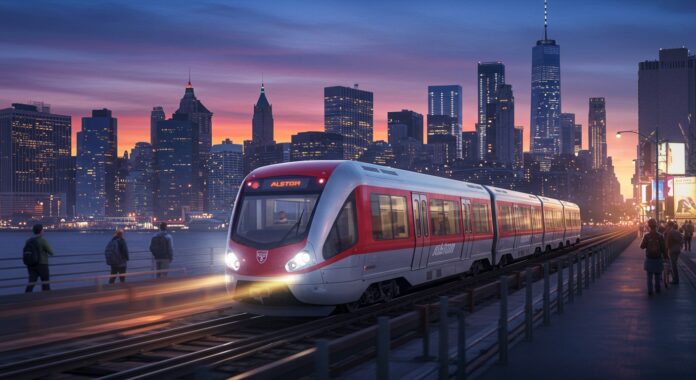The Alstom New York contract has now moved from headline to substance. The French rail giant has disclosed the specifics of its multi-billion-euro agreement with New York’s Metropolitan Transportation Authority (MTA). Valued at €2 billion ($2.3 billion), the deal covers the manufacturing of 316 commuter rail cars, with an option for 242 additional units that could lift the total to €3.3 billion ($3.8 billion).
Yet, behind this impressive figure, some analysts point to execution risks and industrial cost discipline, two factors that will ultimately decide how profitable this Alstom New York contract really is.
Solid order book, but margins under scrutiny
By securing this significant slice of the U.S. suburban rolling stock market, Alstom underscores its North American foothold — an edge bolstered by its 2021 acquisition of Bombardier Transportation. Diversification across continents is one of the group’s few buffers as Europe’s rail investment landscape faces funding uncertainty.
However, multi-year framework contracts, especially those with optional add-ons, often come with tight price conditions. Local content requirements, certification hurdles and supply chain constraints can quickly erode margins if not managed rigorously. Investors will watch closely whether Alstom can deliver these cars on time and on budget, while keeping profitability above market expectations.
Alstom New York contract: a test for its R&D ambitions
On the innovation front, Alstom remains vocal about its “smart and sustainable mobility” roadmap. Roughly 3.7% of revenue is allocated to research and development, an industry-standard figure, but one that critics argue needs to scale further to stay ahead of Asian and U.S. rivals, especially on hydrogen traction and fully autonomous trains.
Winning the MTA’s confidence does signal that Alstom’s reliability and digital rail systems still offer a competitive advantage. But will this American showcase be enough to prove that the group’s technology pipeline can support long-term growth and the shift to greener rail?
Visibility comes with caveats
While this Alstom New York contract feeds into a robust €95 billion order backlog, the group’s outlook remains sensitive to policy cycles and public investment decisions. The deferral of infrastructure spending in core markets like Germany is a reminder that today’s record backlog can quickly be tested by macro headwinds.
At the same time, Alstom must deliver on its post-Bombardier cost synergies, targeting €400 million by 2025, to restore free cash flow and a healthier operating margin. With global competition intensifying and environmental commitments tightening, the real challenge will be to turn headline contracts like this one into sustainable value creation.


